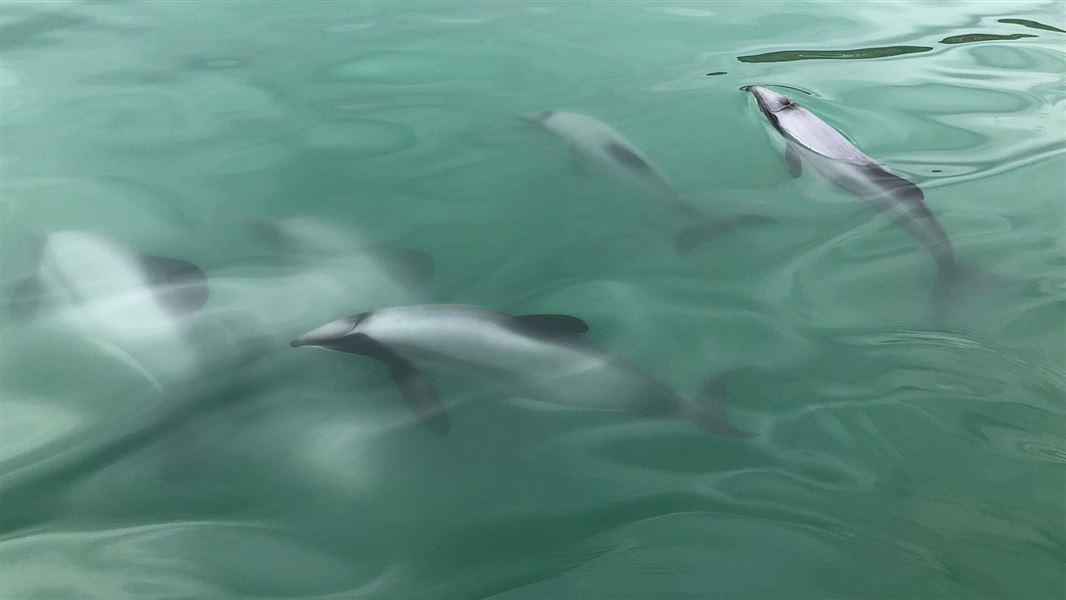Between June and August 2019, DOC and Fisheries New Zealand asked for your feedback on the plan to protect Hector’s and Māui dolphins.
Hector’s and Māui dolphins are unique marine mammals found only in New Zealand waters. These species live close to the coast, making them particularly vulnerable to human activities.
Their numbers have been dwindling. There are estimated to be only between 57 and 75 Māui dolphins over the age of one year left in existence. They are classified as Nationally Critical under the New Zealand Threat Classification System. There are around 15,000 Hector’s dolphins and they are classified as Nationally Vulnerable.
Alongside fisheries impacts (such as trawling and set nets) there are several other threats to these dolphins, including disease (toxoplasmosis), seismic surveying, seabed mining and vessel-based tourism.
We consulted on a range of options to improve the way threats to Hector’s and Māui dolphins are being managed by the Hector’s and Māui Dolphin Threat Management Plan.
The proposals were put together using the best available information.
What was proposed?
The options we proposed included:
- extending current restrictions on trawling and set netting in areas where Hector’s and Māui dolphins live
- increasing the boundaries of marine mammal sanctuaries
- placing further restrictions on seismic surveying and seabed mining in areas where Hector’s and Māui dolphins live
- developing an action plan to address the threat from the disease toxoplasmosis, which has emerged as a significant threat
- placing a moratorium on commercial tourism permits to view Māui dolphins.
Our proposals set out:
- four options for protecting Māui dolphins in the North Island from fishing related threats, and
- three options for protecting Hector’s dolphins in the South Island from fishing related threats.
The proposals also included a plan to manage toxoplasmosis and restrictions to seismic surveying and seabed mining in areas which could cause cumulative harm to dolphins.
Consultation documents
A variety of information was provided to assist submitters.
We’ve made some changes to the consultation documents, as noted below. If you downloaded the documents the morning of 17 June, refer to the updated versions.
The changes were:
- amendments to the table on page 22 to clarify options relating to Pegasus Bay (east coast South Island). This was also updated in the Supporting information and rationale document
- formatting changes to some tables and clarification to wording on page 20, paragraph 2
- an additional explanatory note for table 3, page 21.
Key sources of information include:
- Consultation document (PDF, 1,870K) updated 17 June 2019
- Supporting information and rationale (PDF, 4,560K) updated 17 June 2019
- Spatial risk assessment of threats to Hector’s and Māui dolphins (PDF, 7,940K)
Further information is outlined below.
What happens next?
At the end of the consultation period, DOC and Fisheries New Zealand will analyse your submissions and present them to the Ministers of Fisheries and Conservation for their decision.
These proposals all have significant implications and we want your views so that Ministers can make their decisions based on the best available information, including your views.
Submissions are public information
Note that any submission you make becomes public information. People can ask for copies of submissions under the Official Information Act 1982 (OIA). The OIA says we have to make submissions available unless we have good reasons for withholding them. Valid reasons are explained in sections 6 and 9 of the OIA.
Tell us if you think there are grounds to withhold specific information in your submission. Reasons might include that it's commercially sensitive or it's personal information. However, any decision DOC or Fisheries New Zealand makes to withhold information can be reviewed by the Ombudsman, who may tell us to release it.
DOC and Fisheries New Zealand may post all or parts of any written submission on their websites. We'll consider that you have consented to its publication, unless clearly stated otherwise in your submission.
Further information
- Toxoplasmosis threat to Hector's and Māui dolphin
- Sighting reports of Hector’s and Māui dolphin including validation information
- Data on Hector’s and Māui dolphin incidents including post-mortem investigations of deceased dolphins
- Seismic Surveys Code of Conduct
Reports
- Population dynamics modelling of the Māui dolphin based on genotype capture-recapture with projections involving bycatch and disease risk (PDF, 13,140K)
- Population effects of fishery and non-fishery threats on Māui dolphin (PDF, 665K)
- Underwater sound propagation modelling to illustrate potential noise exposure to Māui dolphin from seismic surveys and vessel traffic on West Coast North Island (PDF, 7,630K)
- Potential impacts of petroleum and minerals exploration and production on Hector’s and Māui dolphins (PDF, 6,286K)
- Updated, annotated bibliography for Hector’s and Māui dolphins, 2018 (PDF, 430K)
- Review of Hector’s and Māui dolphin diet, nutrition and potential mechanisms of nutritional stress (PDF, 816K)
- Preliminary reports on the occurrence of Hector’s and Māui dolphins using acoustic recording devices in:
- Hector's dolphin eco-tourism: Economic impact assessment (PDF, 645K)
